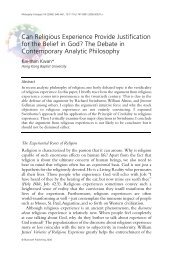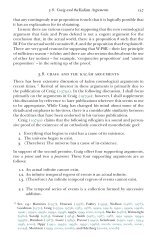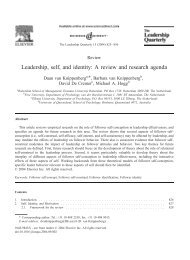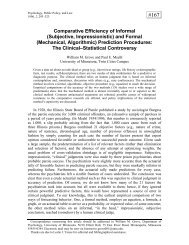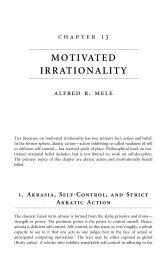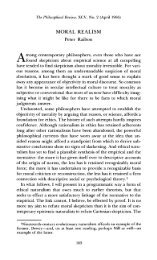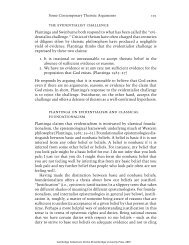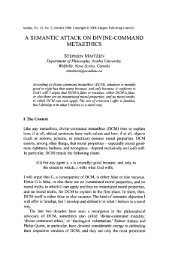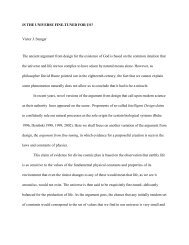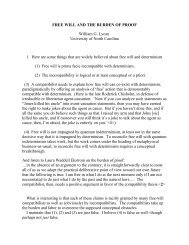Atheism and Theism JJ Haldane - Common Sense Atheism
Atheism and Theism JJ Haldane - Common Sense Atheism
Atheism and Theism JJ Haldane - Common Sense Atheism
You also want an ePaper? Increase the reach of your titles
YUMPU automatically turns print PDFs into web optimized ePapers that Google loves.
156 J.J.C. Smart<br />
information about the world in general could have evolved by natural selection.<br />
Whether or not the ‘homunculus’ strategy in neuroscience is the right<br />
one I cannot see any philosophical objection to <strong>Haldane</strong>’s quotation from<br />
Kathy Wilkes. Detecting horizontals (see p. 94) falls far short of intentional<br />
or goal-directed behaviour.<br />
A simple case of goal-directed behaviour is that of a predictor-controlled<br />
gun. However the target twists or turns the gun will orient itself so as to have<br />
a high probability of hitting the target. If the target had twisted differently<br />
the gun would have moved itself differently. Similarly, consider a robot which<br />
moves around obstacles in a room, however they are situated, to get to a plug<br />
to recharge its batteries. All this is quite mechanistic. Such robots have of<br />
course been built. In the case of organisms the mechanisms will have arisen<br />
by natural selection. Now the goal-seeking behaviour ‘seeking to orient itself<br />
to hit the target’ or ‘moving to recharge batteries’ is on any particular occasion<br />
a sequence of gun movements or robot movements. However, the interesting<br />
thing is that for the behaviour to be intentional there must be something<br />
about the gun plus predictor or the robot’s inner construction that ensures<br />
that if the target had moved differently the gun would have moved differently<br />
so as to maximize the chance of hitting the target, <strong>and</strong> if the furniture had<br />
been arranged differently the robot’s route to the plug would similarly have<br />
been different. In more sophisticated sorts of intentional behaviour, as in<br />
the human case of writing an article, say, a lot of pen movements are involved<br />
but many alternative sequences of such movements would count as writing<br />
the article. I agree that writing an article cannot be defined in terms of a<br />
sequence of h<strong>and</strong> movements <strong>and</strong> even a particular instance of such writing<br />
would be inadequately described as a sequence of h<strong>and</strong> movements. Things go<br />
on in the mind. A materialist would not deny this, though he or she would<br />
contingently identify the mental occurrences <strong>and</strong> control mechanisms with<br />
brain events <strong>and</strong> brain states.<br />
There is indeed something philosophically puzzling about intentionality<br />
(with a ‘t’). This is because it is related to intensionality (with an ‘s’).<br />
Intensionality is a matter of context. Consider ‘Joe believes that the head of<br />
the philosophy department is the dean of the faculty of arts’. Suppose that the<br />
head of the philosophy department is in fact the dean of the faculty of arts.<br />
We cannot substitute for identicals here <strong>and</strong> retain the same meaning. To say<br />
that Joe believes that the head of the philosophy department is the head<br />
of the philosophy department is to ascribe only a trivial belief to Joe. Or again<br />
consider ‘Joe wants a lawn-mower’. It does not follow that there is a lawnmower<br />
that Joe wants. Any lawn-mower might do. And what about ‘Joe<br />
wants a unicorn’? There is no unicorn that Joe wants because there are no<br />
unicorns. We cannot say that ‘wants’ signifies a relation between Joe <strong>and</strong> a<br />
unicorn: it is not like ‘Joe kicks a football’ where there must be both Joe <strong>and</strong>



